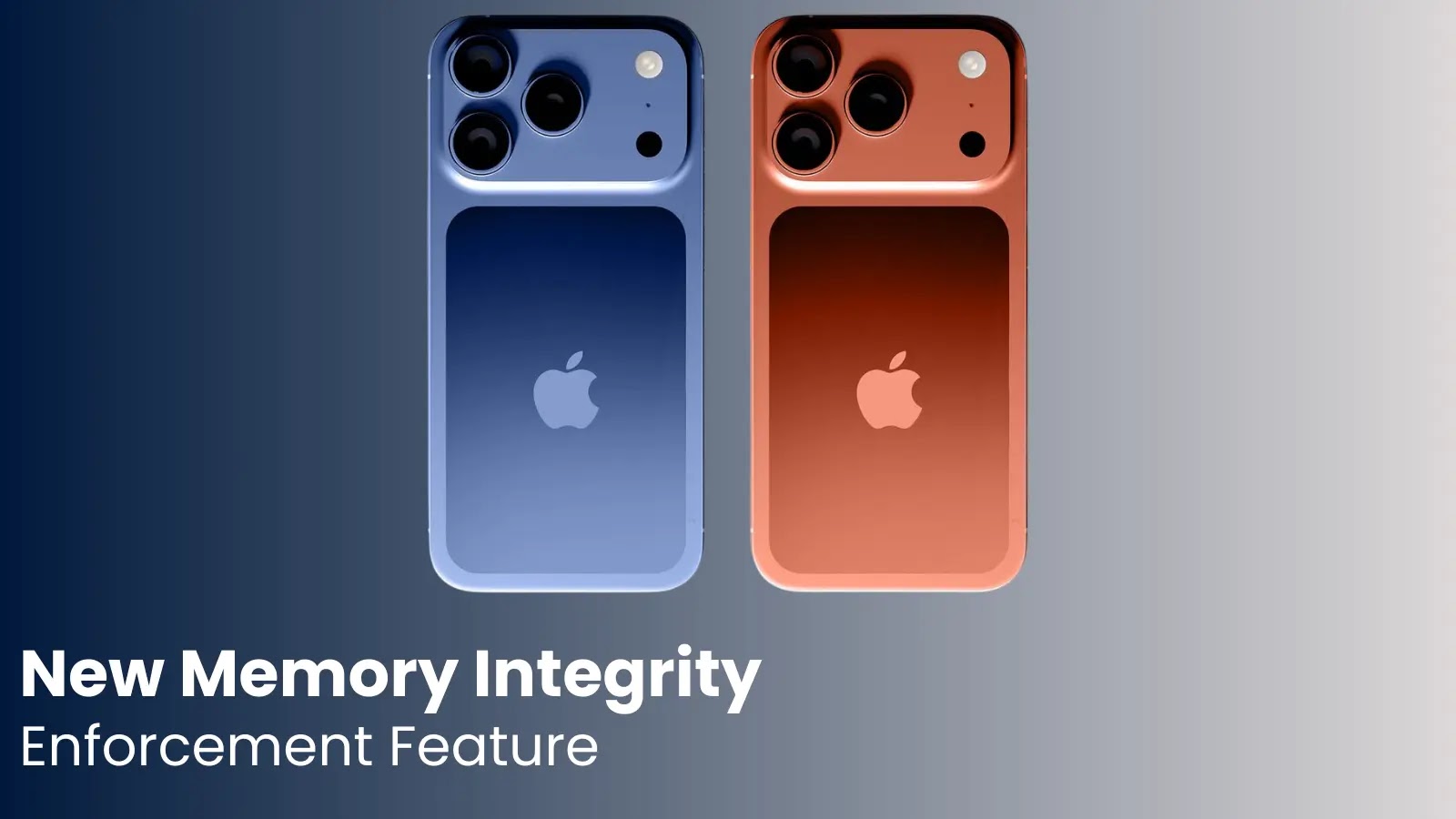
Apple iPhone 17 With New Memory Integrity Enforcement Feature to Block Mercenary Spyware Attacks
The landscape of mobile security is under constant siege by increasingly sophisticated threats. Among the most insidious are mercenary spyware attacks, capable of deep system penetration and unparalleled data exfiltration. Apple, a long-standing titan in user privacy and security, has announced a significant leap forward in counteracting these threats with the upcoming iPhone 17 and iPhone Air. Central to this defense is a groundbreaking feature: Memory Integrity Enforcement (MIE).
Understanding Memory Integrity Enforcement (MIE)
Memory Integrity Enforcement (MIE) represents a culmination of a five-year engineering endeavor by Apple. It’s not merely a software patch but a deeply integrated security capability that leverages the unique architecture of Apple silicon alongside advanced operating system security features. This synergistic approach aims to create what Apple describes as an “industry-first” defense against persistent and highly elusive mercenary spyware.
At its core, MIE operates by adding a robust layer of protection to the operating system’s kernel. The kernel, being the foundational component that manages system resources and runs applications, is a prime target for attackers. By ensuring the integrity of memory operations within the kernel, MIE effectively blocks malicious code from executing or manipulating critical system processes. This significantly raises the bar for attackers, making it exponentially harder for spyware to gain a foothold and maintain persistence on the device.
The Threat of Mercenary Spyware
Mercenary spyware, such as those famously associated with entities like NSO Group’s Pegasus, represents the pinnacle of mobile attack capabilities. These sophisticated tools exploit zero-day vulnerabilities (unknown flaws) to gain unauthorized access to a device, often without any user interaction (zero-click exploits). Once installed, they can monitor communications, access personal data, activate microphones and cameras, and even track location, all while remaining largely undetected.
The primary targets for mercenary spyware are often high-value individuals, including journalists, activists, government officials, and dissidents. These attacks are characterized by their stealth, persistence, and the vast resources typically available to their operators. Traditional security measures often struggle against such advanced threats, necessitating a fundamental shift in defensive strategies.
MIE’s Role in Counteracting Spyware
MIE directly addresses key vectors exploited by mercenary spyware:
- Kernel Protection: Many advanced spyware attacks attempt to compromise the operating system kernel to achieve deep control and evasion. MIE’s focus on hardware-backed memory integrity makes it exceptionally difficult for malware to inject malicious code or corrupt legitimate kernel processes.
- Preventing Code Injection: By enforcing strict rules on how memory can be accessed and executed, MIE acts as a formidable barrier against unauthorized code injection attempts, a common technique used by spyware to introduce its malicious payload.
- Mitigating Zero-Day Exploits: While MIE isn’t a direct zero-day patch, its architectural design reduces the attack surface for certain classes of vulnerabilities, particularly those that rely on memory corruption to achieve arbitrary code execution. This proactive defense limits the utility of unknown flaws.
- Hardware-Software Synergy: The unique integration of Apple silicon (likely leveraging features like Pointer Authentication Codes or Memory Tagging Extensions) with iOS security frameworks creates a stronger, more resilient defense than software-only solutions could achieve.
Implications for User Security
The introduction of MIE on the iPhone 17 and iPhone Air marks a significant uplift in baseline security for Apple users. For the vast majority of users, this means an even more secure device, less susceptible to the most advanced and well-funded attacks. While no security measure is entirely foolproof, MIE significantly raises the cost and complexity for adversaries attempting to exploit Apple devices.
This development reinforces Apple’s commitment to user privacy and security, setting a new industry benchmark for mobile device protection against state-sponsored and mercenary threats. It underscores a shift towards more proactive, hardware-rooted security paradigms.
Looking Ahead: The Evolving Threat Landscape
Even with MIE, the cybersecurity landscape remains dynamic. Attackers constantly adapt their tactics, techniques, and procedures (TTPs). While MIE will be a powerful deterrent, users should still adhere to cybersecurity best practices:
- Keep devices updated to the latest OS versions.
- Be wary of suspicious links or attachments (phishing).
- Use strong, unique passwords and enable two-factor authentication (2FA).
- Download apps only from trusted sources (App Store).
- Regularly review app permissions.
Apple’s MIE is a critical step forward, but vigilance remains paramount in the ongoing battle against cyber threats. It exemplifies how deep engineering investments can yield substantial improvements in protecting digital lives.





